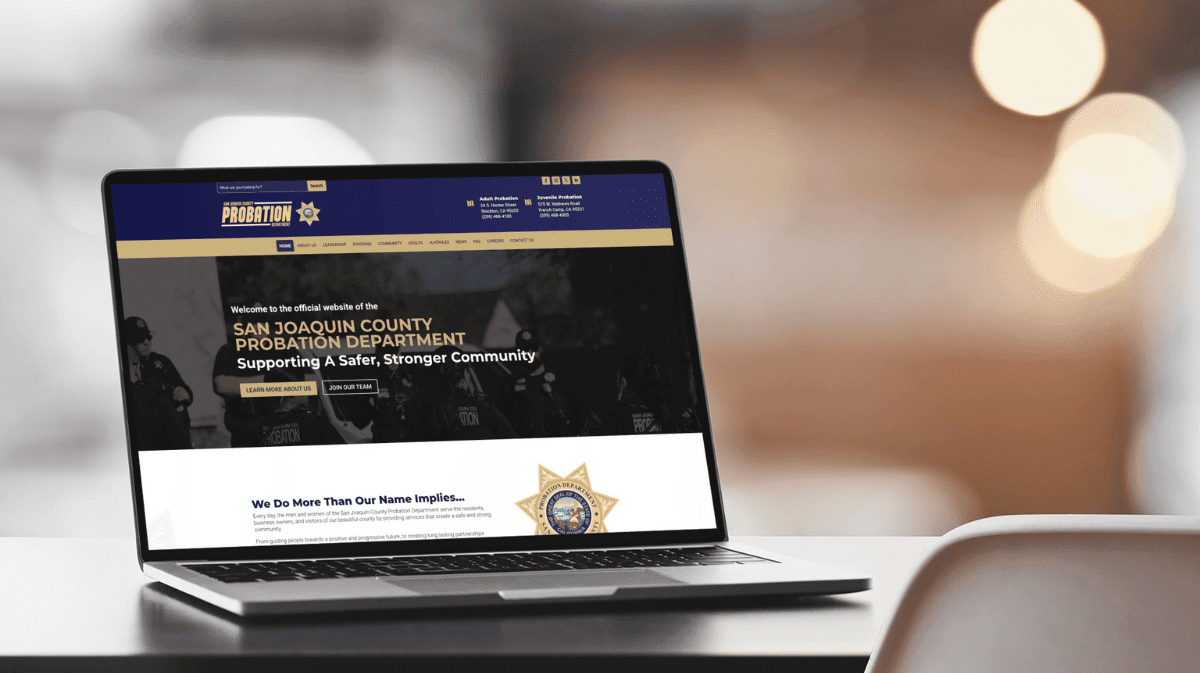Social media has brought about a massive change in the way people communicate and interact with each other. With more than 3 billion active users worldwide and counting, social media is a vital tool for law enforcement and public safety agencies for communication, community policing, investigations, enforcement, and recruitment.
As the use of social media continues to grow, law enforcement and public safety agencies must master the art of social media content strategy to ensure their online presence is effective and appropriately represents the department and community it serves. Whether you’re a small-town police department or a federal agency, having a defined content strategy tailored to your department’s goals, mission, and audience is essential.
Social Media is Not a Bulletin Board
Fortunately, we’re getting further and further away from the attitude that social media and department websites are simply a bulletin board to put everything and anything on. This will completely absolve over the years as more proficient and savvy social media users enter the profession and those currently doing it perfect their skills.
First Impressions for Different Audiences
Your social media presence will likely be the first stop where someone will go to learn about or contact your agency. The content immediately displayed within a few scrolls of the thumb will show what your department does and, quite frankly, whether your community is safe or considered a sh!$ hole. Think about the next time you travel. Pull up the public safety platforms for the community where you plan to visit and tell me if you’re still going.
Depending on your department’s mission regarding how they use social media and what they expect to accomplish through it, you may be inadvertently offending people, such as residents, or you could be setting your department up for failure in transparency. Too many good things happening being posted rather than actual crimes, traffic stops, or investigations might cause your agency to get a label or “jacket.”
When that fateful day happens, and you need to get in front of a growing story, will people believe you’re telling the truth, or are you masking facts just as you do on your demonstrated use of social media?
A Balanced Approach
Mix your content up, showing some day-to-day operations, peppered with some positive stories or events, and topping it off with one of the most essential pieces of content an organization can put out right now: recruitment information.
Our CEO, Tamrin Olden, recommends having a balanced approach when it comes to a content strategy. Show the good things happening, like new officers receiving their badges (which also helps with the recruitment side of things), to the unfortunate realities of when crime strikes a community. Give people the simple truth – don’t mask it.
Define Your Audience and Goals
Successful social media strategies begin with identifying your audience and defining your goals. Doing so will assist in determining the type of content to share and how to share it. Identify the profile of your audience, their needs, and how they interact with social media, and compare these with your goals. Are you trying to inform the community, raise awareness about crime prevention, or improve public perception of law enforcement? The content shared should directly correlate with the purpose and objectives.
Develop a Content Calendar
Developing a content calendar will help you stay on top of what you must share on social media, ensure regular and consistent messaging, and streamline your organization’s online presence. Creating a content calendar allows you to produce relevant content, provide collaboration across your team, and track performance.
Optimize, Optimize, Optimize
Work your content! Make sure your posts work for the platform you are posting on; different social media platforms have different content standards, formats, and timing rules. This goes for everything from the copy (text) to the videos or photos you use in the post. Depending on the specific channel, images, videos, messages, and other features will have varied requirements, limits, and specifications.
Focus on Community Engagement
Foster a community relationship by using social media to engage with residents or local businesses. Doing this will provide a platform for sharing helpful information, tips and clarifying misconceptions. Engaging with the community can give a better understanding of community needs and concerns while allowing the organization to create a two-way dialogue to address such issues in real time.
This is an excellent time to consider what we mentioned above – a balanced approach. You might find business owners aren’t pleased with what you’re posting because it might be luring prospective patrons away. What about real estate agents? Can you imagine how difficult you could be making it for them to bring good people into your community when what you’re “painting” the community as is less than ideal?
Educate Your Team and Stakeholders on Best Practices
Best practices are continually changing in the use of social media. Train your team on the latest techniques to ensure they know the guidelines, laws, the appropriate language and how they relate to your content strategy, engaging with the community, and messaging.
Consistent training will ensure that your team is current on what is acceptable and what isn’t, preventing potential issues that could negatively impact your social media strategy.
Keeping your stakeholders informed and up to date will also help get buy-in to your strategy and avoid questions down the line when you have a mission. You can also save those who “simply don’t know” from becoming embarrassed when they start asking questions.
Conclusion
A well-defined content strategy is necessary to successfully leverage social media for law enforcement and public safety entities. Following the tips in this article can help propel you, your program, your department, and most importantly, your community to a positive position.
Ultimately, a well-implemented social media content strategy will lead to improved community relations, increased public trust and engagement, and a reduction in crime.


